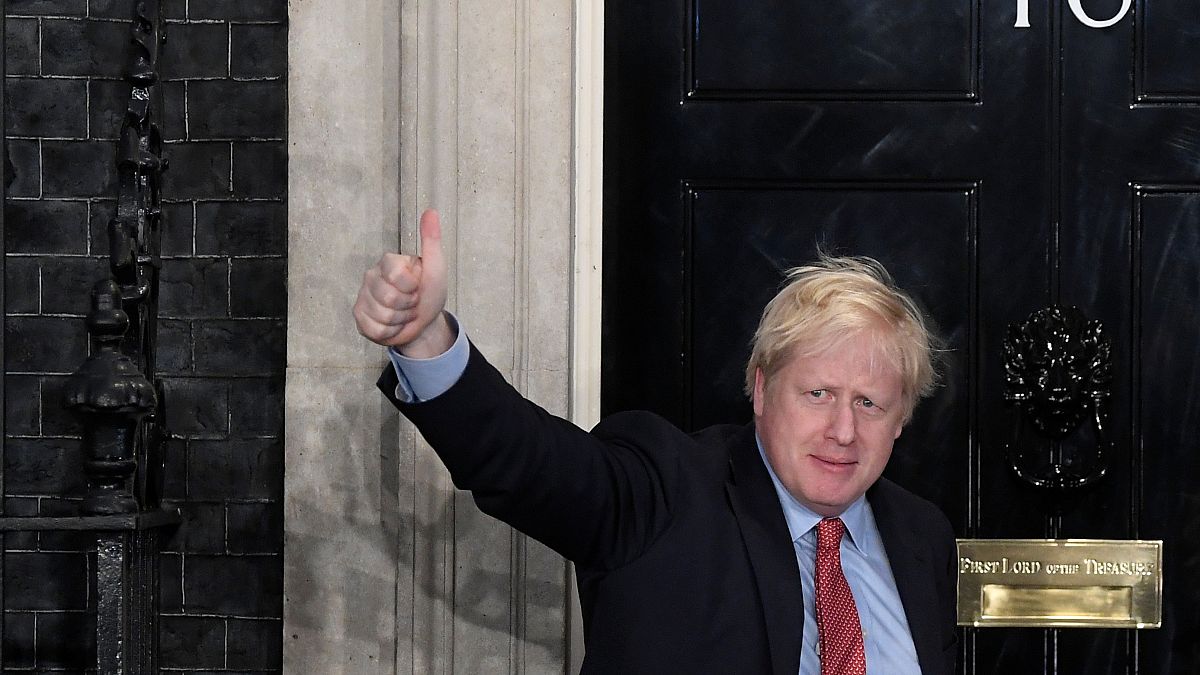The difference between May's vote haul and Johnson's is not nearly as large as the 2019 result makes out.
"A landslide victory," and "biggest win since Margaret Thatcher": superlatives were the order of the day on Friday as Conservative Prime Minister Boris Johnson won a strong majority with 365 seats — 47 more than in 2017 - in the House of Commons.
But in order to give some perspective, in terms of the popular vote, the Tories' share increased by a mere 1.2 per cent compared to the last election.
Compared to his predecessor Theresa May, only 270,000 more people voted for Boris Johnson's Conservative Party on Thursday, official results showed.
Of course, the nature of the UK voting system is part of the explanation. Under the so-called 'first past the post' rule, whichever candidate has the most votes in each constituency is declared the winner.
READ MORE: First past the post: The UK voting system explained
Therefore it is no wonder the number of seats obtained by each party has little to do with their share of the popular vote -- but what else was at play?
Euronews interviewed a political expert to understand how such a small increase in votes delivered the Conservatives such a big win.
Labour losses
Keiran Pedley, Research Director of Public Affairs at IPSOS Mori, told Euronews that the key factor behind the Conservatives' sweeping victory was actually the losses recorded by the Labour Party.
"Although the Conservative vote stayed reasonably steady, nationally Labour's vote share dropped by 8 percentage points," Pedley noted.
"And because British elections are in reality 650 individual elections, individual seats, that obviously means that the Conservatives can gain seats by keeping their votes share consistent with the Labour party losing votes share," the expert said.
Pedley also emphasised the regional nature of the vote.
"Just because the votes share for the Conservatives only increased by a point nationally doesn't mean that it was the same in every area."
"In some of the traditional Labour heartlands, particularly those places that voted to leave the European Union in large numbers, the Conservative votes share increased quite significantly."
Split Remain vote
Pedley said that it was fair to say a split remain vote had contributed to hand Boris Johnson a victory.
"It was always quite likely to be the case because the nature of the remain vote is that it's spread across different parties -- so at a very basic level, Labour, the Liberal Democrats, the Green Party, the SNP, etc." the expert told Euronews.
"There is analysis out today suggesting that if you just added up parties supporting a second referendum on Brexit versus those who oppose, ironically the parties that support a second referendum would get 52 per cent of the vote and the parties that oppose would get 48 per cent of the vote."
Beyond Remain and Leave
But the expert warned that the split Remain vote was not the only explanation.
"I think there is some truth in the fact that the remain vote was split across parties and helped the Conservatives get the majority, definitely, but we shouldn't only think of that," Pedley told Euronews.
"Each of the two main parties do even now still have people within their supporter base who voted in the opposite direction," he continued, noting that a significant minority of Labour voter was pro-Leave, while some Remainers voted for the Tories.
"As much as this will be portrayed as the Brexit election (...), there are other issues at play," Pedley said.
Whereas social class used to be a key dividing line in how people vote, the expert said other factors had now taken over - including age, education, urban vs rural areas, etc.
"Remain and Leave are not the only way to understand British politics," Pedley said.
